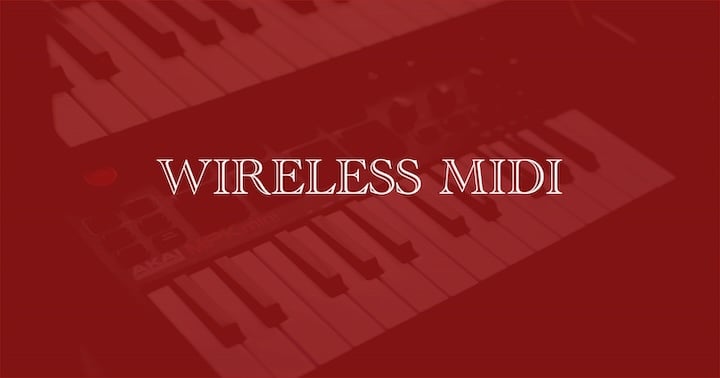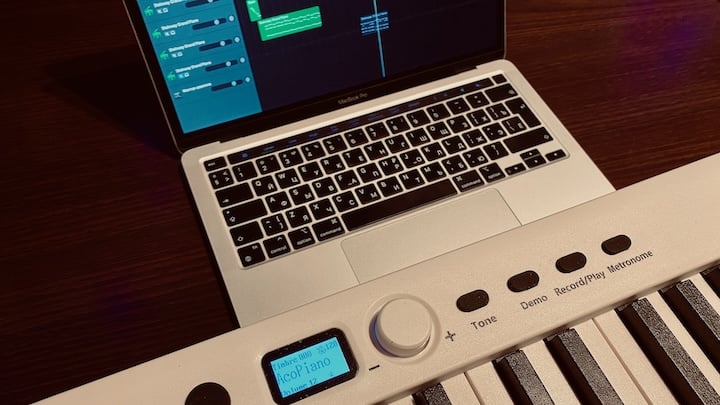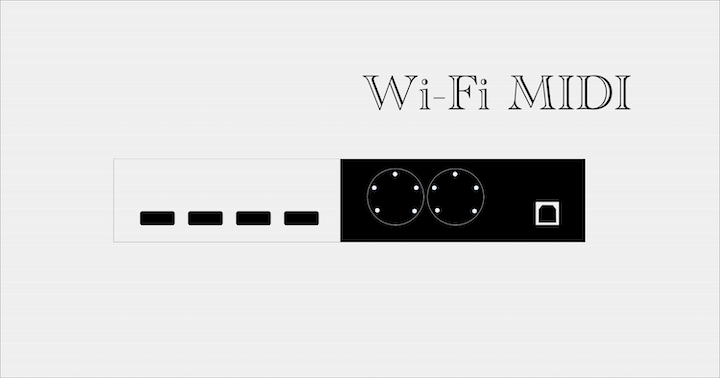[WINDOWS] DOWNLOAD FREE
[MAC]

Back to top
Wireless Musical Instrument Digital Interface is desirable for several reasons:
1. Convenience of the creativity: Wireless MIDI allow work without physical MIDI cables. It allows for easy and quick connect MIDI devices. There is no hassle of dealing with cables and their limitations.
2. Performer mobility: With wireless technologies, musicians move around more freely without being restricted by cable lengths. This flexibility allows for more dynamic and engaging performances on stage or in the studio.
3. Setup flexibility: Wireless connection enables the creation of versatile setups. It allows for MIDI devices to be placed in different locations without the constraints of physical connections. This flexibility provides more options for arranging and configuring your gears.
4. Integration with mobile devices: Many wireless MIDI solutions are compatible with mobile devices such as smartphones and tablets. This opens up possibilities for musicians to use MIDI controllers or instruments with their mobile devices. It makes the music production and performance more accessible and portable.
5. Opportunities for collaboration: Bluetooth of Wi-Fi MIDI facilitates easy collaboration between musicians or producers. It allows multiple MIDI devices to communicate in real-time without wires. It making easier to work together, exchange projects, and create music collectively.
Back to top
MIDI information can be transmitted wirelessly. With the advancements in technology, it is now possible to exchange MIDI commands and data wirelessly using Bluetooth or Wi-Fi connections.
Back to top

Network and peer-to-peer protocols can cause delay. In instance, you push the note on wireless keyboard. Sound from the target synthesizer unit appears after a while. It is discomfortable.
This delay is called "latency". It is measured in milliseconds (ms). Modern radio protocols allows reduce the latency to allowable values.
Bluetooth MIDI also have latency. Its amount can vary depending on the specific devices being used and used the protocol type.
The latency experienced with the Bluetooth technology can be influenced by:
It means, that not only the wireless technology defines the delay. But full system should be considered.
In general, higher the protocol versions (such as Bluetooth 5.0) tend to reduce latency compared to the earlier versions. The actual latency experienced can vary depending on the specific implementation of the Bluetooth MIDI device.
In terms of latency for various devices, it can range from a few milliseconds to several tens of milliseconds. Latency values below 10 ms are generally considered to be low and should not significantly affect most musical performances. However, for applications requiring extremely precise timing, such as live triggering of drum sounds, minimal latency is desired.
Vendors of devices for the music production are trying to cut down the latency in MIDI over Bluetooth.
Back to top

MIDI over Wi-Fi is implemented. But it has more limited use yet. In instance, on Mac, in the MIDI Studio window, you can operate with Network object.
Back to top
Back to top
In summary, wireless MIDI offers convenience, mobility, flexibility, integration with mobile devices, and collaborative opportunities. It enhance the overall experience of music production, performance, and connectivity between MIDI devices.
Wireless MIDI can be very good and reliable. Although there were concerns about latency and stability. Especially, it was in the earlier stages of wireless technologies. Advancements in wireless communication have greatly improved its performance.
Modern wireless MIDI solutions offer low latency and reliable data transmission. Musicians and producers find wireless MIDI to be suitable for their needs. And such connection provides a seamless and responsive experience.
There are some "noname" wire-free MIDI connectors. But the author would recommend using trusted brands to achieve lower latency and avoid possible problems with MIDI messages. If you're willing to take risks in hopes of saving money, you can try alternative devices. They may work good too for lower price.
Live performance on a concert use can cause additional issues. It may occurs due to sophisticated interference environment.
In the studio, take care about control of noise. It may happen due to additional radio sources.
You can use traditional 5DIN or USB cables as a last resort. However, this is not a panacea for noise.
Back to top
Back to top